- Here is a proposed framework
for management of Hindu Temples and Socio-Spiritual Organizations located in
India. Management Guru Dr M B Athreya sets an outline. There is not a one size
fits all approach.
Many Hindu Spiritual
organizations and Temples are large in size and incur large expenses. How
should they and smaller ones be managed and what are some key controls to be
exercised?
Management is very relevant for organizations esp. Dharmic organisations like Matams,
Ashrams, Aadheenams, Temples that are not nationalised etc
To fulfill its mission every
sanstha needs an organization. What sort of organization should exist? What should
be key responsibilities, checks and balances etc. It is a complex subject. There
is no one one size fits all approach.
Management of Hindu temples
is complex because of the diversity i.e. inherent to Sanatana Dharma. Every Sampradaya (understood wrongly as
denomination) has its own rules. Also, there are certain communities or
families that are the traditional administrators and protector of a temple.
This essay does not propose interfering with these rules or rights. It is focused on how the institution can be managed
better.
Read Hindus cannot be governed by
Christian concept of Religious Denomination
Note that temples mainly in
the South are governed by Agama Sastras while Mutts are places for imparting
the philosophy of the Mutt. Then there are socio spiritual organizations like
Art of Living, Isha Foundation, Ramakrishna Mission, Vivekanand Kendra and
Brahma Kumaris.
Read Chidambaram
Temple and Podu Dikshitsars
No one framework can fit for
Mutts, socio spiritual organizations and temples. So this essay shares some
broad concepts which an organization can choose from, depending on size and
complexity. This essay is a beginning.
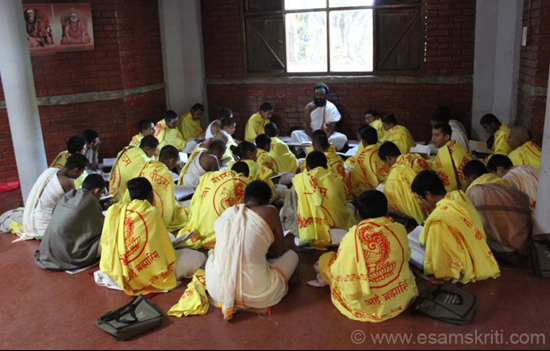 Vedic School, Sringeri Mutt. This is the Prarthana Mandiram. 2011.
Vedic School, Sringeri Mutt. This is the Prarthana Mandiram. 2011.
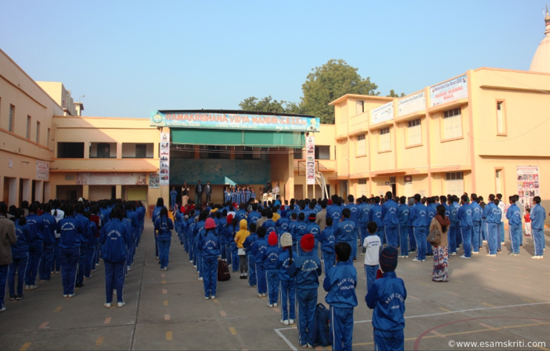 Ramakrishna Mission School, Gwalior. 2020.
Ramakrishna Mission School, Gwalior. 2020.
 Universal Peace Hall, Brahma Kumaris, Mount Abu. 2018.
Universal Peace Hall, Brahma Kumaris, Mount Abu. 2018.
 Vishalakshi Mantap, Art of Living International Centre, Bengaluru.
Vishalakshi Mantap, Art of Living International Centre, Bengaluru.
 Vivekanand Kendra School, Roing, Arunachal Pradesh. 2013.
Vivekanand Kendra School, Roing, Arunachal Pradesh. 2013.
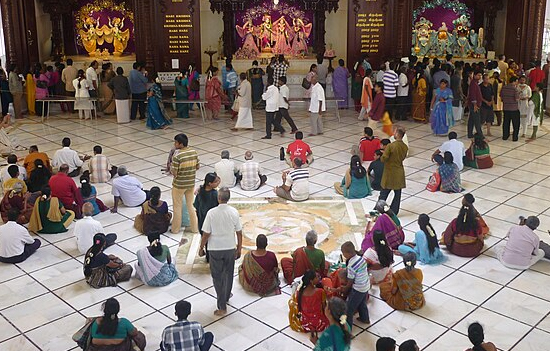 BAPS Swaminarayan Mandir.
BAPS Swaminarayan Mandir.
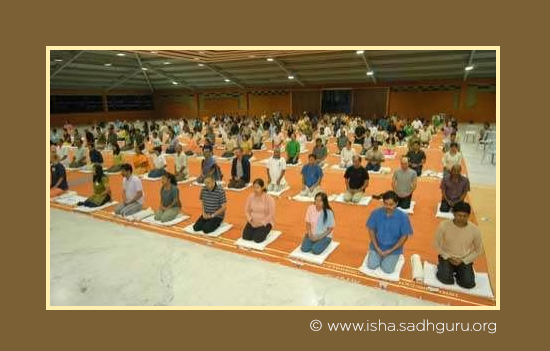 Isha Yoga Centre, Coimbatore. Yoga Class.
Isha Yoga Centre, Coimbatore. Yoga Class.
Padma Bhushan and Management Guru Dr M B Athreya sets an outline. He
says, “We can draw valuable lessons from
long-standing Dharmic organizations
that would help similar institutions, big and small.
1. Mission
It is important to have a clear Mission. What is the Core Purpose or reason for the Institution’s existence? The Mission can be sustenance and propagation of various thoughts of Sanatana Dharma for e.g. Yoga, Advaita Vedanta and Ayurveda, Educating children of the North-east, Opening schools and medical facilities in backward areas.
2. Succession Planning
This is so essential for the long term survival, continuity and contribution of the Institution. It’s accumulated institutional experience and memories will be a great strength for its future.
Such succession
planning is required at two levels-the spiritual head and the Administrator. So
succession planning needs to be for two posts. This is akin to Chambers of
Commerce where there is Vice-President who is trained
and guided on the job, to eventually become the President.
Making
successors known early on helps in ensuring a smooth transition.
3. Organisation
Even single location
institutions need a structure and competent staff. It can be a simple, lean, efficient
structure. Big Mutts have over the centuries grown large with bhaktas, all over
India, and globally. Devotees from
various locations keep visiting the main Matam.
The inflow is huge, during festivals, like Navaratri and Mahashivaratri.
The structure is
generally as follows.
At the apex is the
Jagadguru/Pramukh Swamiji, Mataadipati, etc.
Then, there are Gurus and Bramhacharis.
Finally, there is staff to provide Pilgrim Facilities for stay, pujas,
meals etc.
The branches, in
several states of India and abroad, have their own local, simple
structures. Some have a separate
publications division, others have it in-house. This varies from organization
to organization.
Every sanstha’s Mission has to be actualized with appropriate strategies.
Strategies
A major strategy for
say Art of Living is getting more people to attend their Sudarshan Kriya programs,
become preceptors and get involved in their social activities like conducting
classes for poor students. For a Ramakrishna Mission the strategy would be of
Service by opening new Schools, Hospitals etc, expand existing ones and provide
medical and educational services to the needy. In backward areas like Bastar,
they also run ITIs (technical training institutes and agriculture technique
training). For some Mutts it is the Vijaya
Yatra. The Jagadgurus go on travel
to different cities, towns and villages.
At each stop, hundreds of devotees get their darshanam; hear their
pravachans; witness their pujas etc.
Other strategies are running Patashalas; Charitable Clinics; Hospitals
etc.
Essential
lessons that other Spiritual Institutions can draw from the well run Sansthas
1. Instead of pursuing a series of separate activities,
step back and articulate a Mission,
based on the needs in society and the core beliefs and competences of the
Founder and her/his close associates. A
Mission closely linked to Sanatana Dharma.
2. Identify a potential successor and groom her/him to take over, when the Founder, Head
decides to handover; or is in indifferent health. Do not wait till when founders give up their
body.
3. Develop the organization.
A simple structure to
begin with i.e. Right people with satvik
values. Gradually, expand the structure,
through branches, headed by committed people.
4. Keep formulating and implementing new strategies, in
pursuit of the Institutional Mission.
5. Help smaller spiritual institutions, unobtrusively,
where they seek or need help.
6. Associate with all like-minded institutions in your state, region, nationally and globally.”
eSamskriti is grateful
to respected Dr Athreya for sharing the above wisdom. Now let us move on to the
nuts and bolts of running an organization.
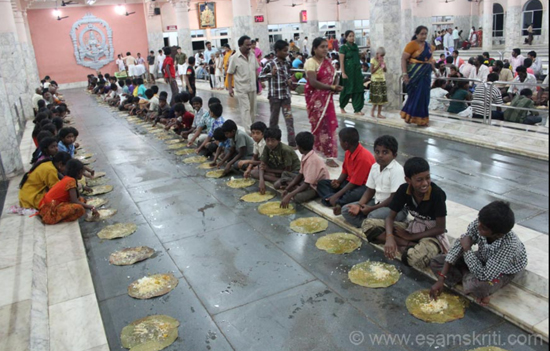 Annashetra Sringeri Mutt. 2011. Free food served to thousands of devotees daily.
Annashetra Sringeri Mutt. 2011. Free food served to thousands of devotees daily.
 Kitchen of Brahma Kumaris, Abu road. 2018.
Kitchen of Brahma Kumaris, Abu road. 2018.
What you find below is a broad framework
that can be used by a socio-spiritual organization or temple that has not been
nationalised. To write this I spoke to people in other organizations and drew
upon my management / finance experience plus a Note on Administration of a
Hindu Temple in Tamil Nadu by temple activist T R Ramesh Sir.
I realize that every organization has
different needs. Pick and choose what works for you for e.g. a small temple
does not need an Administrator or CEO. I have used CEO type nomenclature of
want of knowledge about traditional names. What matters is responsibility of an
individual more than designation.
 Mayavati Ashram, Kumaon where Swami Vivekananda stayed here in 1901.
Mayavati Ashram, Kumaon where Swami Vivekananda stayed here in 1901.
Spiritual OrganizationMost organizations work through a Charitable
Trust. An organization might have numerous such trusts, based on location or
activity. The Trust would have a Managing Trustee and a Board of Trustees. The
starting point is having work clearly organised. Read on.
1. Spiritual Guru is one head and
Administrator another. The Guru needs to have full confidence in the
administrator. In some organizations the Board of Trustees plays an important
role in giving direction and laying down policies.
2. Guru is focused on the spiritual
aspects etc and Administrator on running the organization/facilities to
devotees etc.
3. The departmental heads or Group
Coordinators could be Swamis/Swaminis with Bramhacharis looking after individual departments. And then are Employees.
Devotees could assist when required.
Remember that smaller temples and
spiritual organizations need smaller teams.
4. The
departments could be –
A. Finance/Accounts/Income-Tax:
How money is spent/accounted for, Opening of Hundi box, accounting for gold/grains
received & monitoring project costs.
B. Internal
Audit: of all departments. Are checks and balances working and is money being spent for the organization’s mission.
C. Temple
rituals in-charge: has to ensure temple rituals are done as prescribed.
D. Knowledge
Sharing: could be through Publications department who publish books or
journals like say Tattvaloka or Advaita Ashrama. (sometimes
done a separate legal identity) and Library for Monks/ Bramhacharis /Scholars.
E. Managing
Annashetras (langars that serve free
food). This is a big activity in most temples of Karnataka for e.g. Sringeri
and Dharamsthala.
F. Managing
Vedpathshalas/Gurukuls/Training School: for scholars/children.
G. Rooms
for pilgrims to stay: a challenging job during festivals. Finance has to
lay down systems to ensure money collected is properly accounted.
H. Organising
Events: like Mahashivaratri,
Cultural Programs, Discourses, Annual Temple festivals.
I. Handling
Media and Spokesperson: Media would include print, television and social
media. The scope of work has significantly increased with social media.
J. Custodian
of Assets: This would cover immovable property/gold. Department must be
involved in purchase of all immovable property purchased and copies of
documents. It must account for gold received, distributed and locker.
K. Outreach:
Every organization wishes to increase the number of individuals it impacts
positively. It also needs to raise funds to support its activities. Devotees
can play an active role here.
L. Relief
Work: Many organizations/temples play an active role during natural
calamities. Need a team with expertise. They can coordinate with branches.
Devotees can play an active role here.
M. Compliance:
Running a trust requires multiple compliances at Centre and State government
levels. One team needs to ensure compliance and flag issues.
N. Bramhacharis/Swamis/Employees
Welfare: This must include how they will be looked after when they get old or sick – Medical Insurance.
O. Purchase
department: meeting organization needs. Invariably in this department is
that corruption occurs.
P. Legal
Advisor: a devotee can manage this and if required seek external resource
in case of litigation.
Q. Yoga/Vedanta/Meditation
Trainers
R. Corporate
Social Responsibility (CSR) Coordinators – undertaking CSR work on behalf or training programs for corporates. For similar work, interacting and delivering programs to various government departments.
Some spiritual organizations run schools
and sell toiletries etc. They would be invariably managed through independent
trusts. The head of these organizations could keep the Chief Administrator
updated. Key is to ensure that name of the parent organization is not spoilt
because of their action or inaction.
Some Controls
1. Compliance Certificate: be submitted
to Trustees at pre-determined frequency.
2. How are Donations accounted for esp.
cash collected in the Hundis.
3. CEO to ensure income of temple/trust
used for the purpose for which it exists.
4. Whether Landed or Immovable
properties which were endowed to the temple by devotees continues to be in
Possession of the temple trust for e.g. in Assam, Satras own agricultural land.
5. If any property including building is
given out on rent, is the rent being regularly received.
6. Are there any encroachment on organization’s/temple properties.
7. Are endowments received in form of
grains utilised only benefit of temple etc.
8. List of Jewellery gifted by devotees
to be prepared and whether it shall be used for deities or kept as general
jewellery as part of organization assets.
9. List of Jewellery (deity and other
jewellery to be shown separately) to be prepared regularly and physically
verified every six months. In case of discrepancies between list and physically
counted CEO to inform trustees.
10. Cash Verification to be done every
month.
11. Internal Audit report should be
presented to Board of Trustees.
12. If the temple trust sells milk,
prasadam the CEO must confirm quarterly that production and sales are accounted
for. If decided, internal auditors can review.
13.
CEO to ensure and confirm utilisation of funds of specific endowments.
14. List of icons, statuaries, works of
arts and other valuables including ancient vessels, palanquins, chariots, etc.
to be prepared and audited annually.
15. Project Conceiving and Cost – Devotees could help here.
16. Daily Community Prayer: pray
together, enables meeting of the mind.
17. Key Trusts documents should be
physically verified by auditor annually.
18. Sale of any temple properties to be
done only with approval of Board of Trustees.
19. A serially numbered receipt should
be issued for every donation received.
20. All dealings in Foreign Exchange to be
done through one trust.
21. If an organization has numerous
trusts, receipt of donations from outside India should be done by the trust
that has Ministry of Home Affairs approval.
22. The Board of Trustees should decide
a policy on how Surplus Funds shall be invested? Options being fixed deposit in
a nationalised or a co-operative bank, or in mutual funds or equities.
Some other matters 1. Temple Flag must be on temple when
required.
2. Temple Tanks should be kept clean.
3. Consider having a Gaushala for daily
supply of milk.
4. Ancient temples can only be preserved
not renovated.
5. Consecration of the temple to be done
in line with the Agamas / temple traditions.
6. Grains and pulses should be prepared as per
temple traditions.
7. Temple Prasadam should not be for sale.
8. The Managing Trustee of the
charitable trust should always be born in India and Indian citizen.
9. If animals for e.g. elephants received
as offering they should be accounted for as if grains are received. They need
to be looked after.
This essay is a beginning.
We look forward to feedback from the learned and users.
Wish the WAQF Boards and
Church organizations share their management framework and best practices for
the benefit of all.
Author is a Senior Chartered Accountant who worked with Hindustan Levers amongst other companies and as a Business Consultant for about twenty years.
This article should not be republished without written permission of www.esamskriti.com . Contact esamskriti108@gmail.com